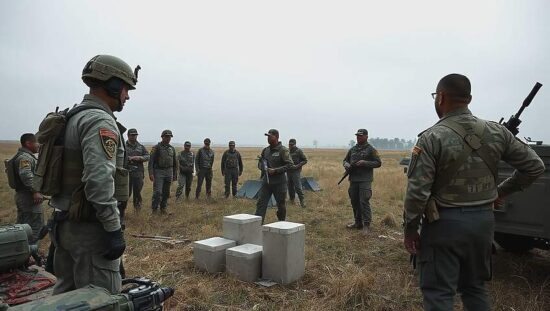The Bundeswehr’s efforts to modernize its radio communication systems are facing significantly deeper challenges than previously acknowledged, according to a report published by “Welt am Sonntag”, based on a dozen classified documents originating from the Defence Ministry and military units. The ambitious project, crucial for enhancing the Bundeswehr’s operational capabilities, is now facing a protracted and compromised implementation.
Despite halting field tests in May, the serial integration of the new radio devices continues, however, at a considerable cost to the readiness of the Land Forces. A proposed interim solution – a hybrid approach utilizing both digitized and analog equipment – while intended to maintain “military operational capability” necessitates “a temporary reduction in readiness” the documents reveal.
The Panzerbrigade 37, currently designated as a NATO “Forward Land Force” (FLF), is particularly affected. The documents indicate a deeply concerning prospect: even after a scheduled assessment in November, the entire system is unlikely to be combat-ready, deemed suitable only for training exercises. A decision regarding the continuation of the serial integration into 2026 is not expected until the fourth quarter of 2025, suggesting a significant delay and potential restructuring of the modernization timeline.
The classified papers suggest failures were anticipated well before the decisive May test. Concerns arose regarding the software delivered by a consortium of manufacturers, demonstrating capabilities falling short of requirements. A software patch, applied prior to testing, failed to remedy the inherent faults.
Following the test’s failure, a preliminary report from the Office for Army Development bluntly concluded the system was “not combat-ready”. The termination of the trials at the Munster training ground was deemed “critical” with several deficiencies so severe as to “prohibit its use by the troops.
Specific operational flaws highlighted in the documents include excessively cumbersome encryption key implementation and a crippling 40-day lead time for frequency management – a stark contrast to the required one-day turnaround in a combat scenario. The overall system, the report emphasizes, is “vulnerable to human error”. Initial user operation during the May tests required two hours, a timeframe acceptable only under carefully controlled laboratory conditions supported by an unconventional IT infrastructure utilizing camouflaged VW Transporter vehicles – a scenario deemed wholly impractical in genuine combat.
The final assessment paints a damning picture: “In its current state, the radio device is not suitable for use by the troops”. This deficiency, the report concludes, is “in contrast to the tactical necessities in war”. The implications for Germany’s commitment to NATO readiness and its ability to fulfill rapid reaction force responsibilities are considerable, raising serious questions about the oversight and management of this strategically vital modernization effort. The slow pace of change and the compromised functionality are prompting calls for a comprehensive review of the program and a reassessment of the contractor consortium’s performance.





